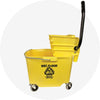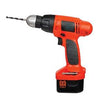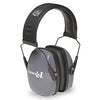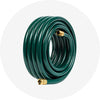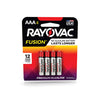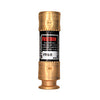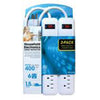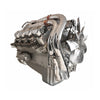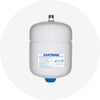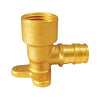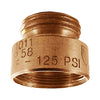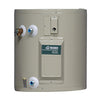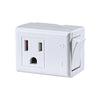A Beginner's Guide to Understanding Pipe and Fitting Sizes
∙ min read

Pipes are cylindrical conduits used to transport fluids, gases, or bulk solids in various settings, including industrial, construction, agricultural, and residential. The size of pipes can vary widely, from small plastic pipes used in irrigation systems to large steel pipes that transport oil and gas over great distances.
In this blog, we'll delve into pipe sizes and fittings, which are essential components for ensuring efficient and safe material flow through pipes. Whether you're a seasoned professional or a DIY enthusiast, understanding the basics of pipe sizes and fittings is crucial for selecting the right components for your needs.
Pipe sizes
The sizes of pipe fittings depend on the type of pipe and the measurement system used. For example, pipe fitting sizes are measured in inches in imperial measurement systems, while in metric measurement systems, they are measured in millimeters.
It is important to note that the nominal diameter of a pipe is not exactly equal to the actual inside or outside diameter of the pipe. However, the nominal diameter is a standard measurement used to identify and size pipes and fittings.
The following table shows the standardized pipe manufacturing measures in inches and millimeters.

Source: https://ddd.uab.cat/pub/tfg/2016/148700/TFG_VamIndustry_v04.pdf
Types of pipes and their uses
It is also essential to know what type of material to choose for a pipe, taking into account factors such as the temperature and pressure of the fluid to be transported, the environmental conditions of the installation, and the chemical compatibility between the material of the liquid and that of the pipe.
It seems logical, but for example, if you need to transport a fluid at 300ºC, you cannot use a polypropylene pipe for this task, nor can you use a steel pipe to transport water, as this would cause corrosion.
Below is a list of some of the most common materials used in different types of pipes and their applications.
- Steel: It is strong and durable, so it is used in applications that require high resistance, such as the transportation of natural gas, oil, and water. It is one of the most commonly used materials for pipes.
- Copper: It has excellent thermal conductivity and is corrosion resistant, so it is used to install drinking water and heating pipes.
- PVC: It is lightweight, easy to install, and corrosion-resistant, so it is commonly used in plumbing and drainage systems.
- Cast iron: is solid and durable, ideal for high-water volume applications like drainage system construction.
- Polyethylene: is flexible and easy to install, making it ideal for subway applications such as water and gas supply.
- Polypropylene: is resistant to corrosion and chemicals, making it ideal for pipe installation in the chemical and pharmaceutical industry.
- Stainless steel: It is resistant to corrosion and chemicals, making it ideal for pipe installation in the chemical and pharmaceutical industry.
- Fiberglas: It is resistant to corrosion and wear and is used in applications where pipes are exposed to chemicals and acids.
Pipe fittings
Pipe fittings are elements used to connect, control and redirect fluids within a piping system. They come in different shapes, sizes, and materials to suit various applications.
Some common types of pipe fittings are as follows.
- Couplings: They are used to connect two pipes of the same size.
- Elbows: They change the flow direction by 90 or 45 degrees.
- Tees: They create a branch connection to a pipe.
- Crosses: They are similar to tees but have four branches instead of three.
- Reductions: They are used to increase or decrease the pipes' diameter. They are conical.
- Plugs: They are used to close the end of a pipe.
- Flanges: They are used to connect pipes or valves to other equipment.
- Adapters: They connect pipes with different types of ends, such as threaded or flanged ends.

Pipe fittings can be made from various materials, including metals such as stainless steel, brass, and copper, and plastics such as PVC and CPVC. These fittings come in different sizes and dimensions, which are determined by the diameter of the pipe for which it is intended. The most common sizes range from 1/8 inch to 24 inches in diameter, although larger sizes are available for special applications.
In addition, it is essential to note that pipe fittings can also be rated according to their pressure rating, which reflects the maximum pressure the fitting can safely withstand. This rating is usually expressed in pounds per square inch (PSI).
It is crucial to select the proper connection for the specific application and ensure that it is installed correctly to ensure the integrity of the pipe system.
Do you already know about Max Pro?
In conclusion, selecting the correct pipe sizes and fittings is crucial for the efficient operation of any plumbing system. Whether you're working on a residential or commercial project, it's essential to consider factors such as flow rate, pressure, and material compatibility to ensure optimal performance and longevity.
At Max Warehouse, we understand the importance of having access to high-quality pipes and fittings at competitive prices. That's why we offer Max Pro, our business program that provides special benefits such as bulk pricing, net 30 terms, and more to help you streamline your procurement process and maximize your savings.
By partnering with us and utilizing Max Pro, you can rest assured that you're getting the best products and support to help you complete your projects on time and within budget. Contact us today to learn how we can help you with your pipe and fitting needs.
Max Warehouse is the ideal partner for your business!
Sources consulted:
- https://ddd.uab.cat/pub/tfg/2016/148700/TFG_VamIndustry_v04.pdf
- https://pumpsbombas.com/tutorial-conceptos-basicos-tuberias-accesorios/


